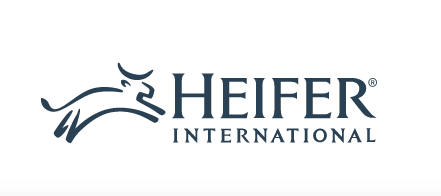



How livestock might be the secret to restoring our soil
Allan Savory tells a story about the time a bull rhino wandered into his camp while he (Allan, not the rhino) was taking a bath.So he did what any reasonable person would do: he quickly dried his hands and, still stark naked, grabbed his camera. The rhino studied him, sniffed at him and softly snorted until, satisfied, he went on his way. In the last photo in the series, the rhino’s horn fills the frame.
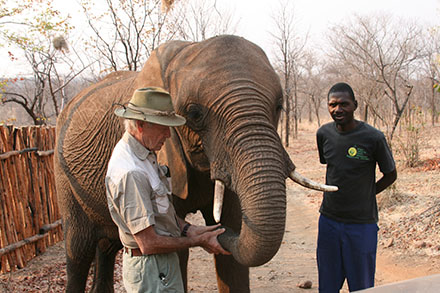
Savory and an Africa Centre staff member check on a young elephant named Dojiwe. All photos by Tony Eprile
It’s easy to get Savory to share stories of encounters with wild animals. If it’s evening at his camp at the Africa Centre for Holistic Management in Zimbabwe, he’ll be outside his round, thatch-roofed hut near a low fire, smoking a corncob pipe—regularly cleaned with guinea fowl feathers—happy to reminisce about chance meetings in the bush. There was the incident when he had a split second to determine, based on his instinct, whether he should shoot a charging Cape buffalo or go on the assumption that it would veer away. Indeed, the buffalo did swerve to the side, but not before providing a lifelong thrill to Savory and the visitors walking behind him. Then there was the baby porcupine he found along Lake Tanganyika on the Congo border. “He was one of the best pets I ever had,” Savory recalls. “He used to sit in the Land Rover with me. In the house he would come over and nuzzle the guests.”
Savory, now 79, is known throughout the world for developing Holistic Management, a decision-making model for managing livestock in which the animals’ actions and behavior promote ecological restoration. After spending a week with Savory in his wild but troubled home country, I find it ironic that in the public mind he’s associated with domestic animals, particularly cattle. For it’s clear that the sounds, smells and history of this rugged place—the interplay of nature, knowledge and memory—are integral to who Savory is and how his ideas evolved. And that for all the policy addresses and international renown of his current life, his heart is in the bush.
An outdoor classroom
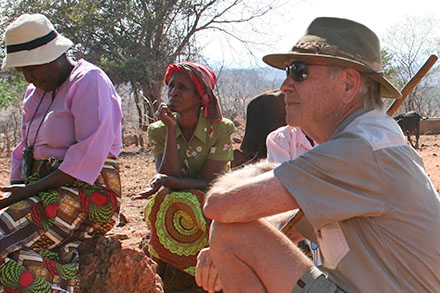
Savory pays attention at a community meeting in Sizinda, a local community that has been practicing Holistic Management.
The Dimbangombe Ranch lies about a dozen miles—the last six or so over rattling dirt roads—from Victoria Falls in western Zimbabwe. The 7,900-acre property, owned by the Africa Centre for Holistic Management but under the trusteeship of five local chiefs, is the world’s primary demonstration site for Holistic Management. Thanks to restorative grazing practices implemented over the last 15 years, the landscape has revived. Where the soil surface was dry and barren there’s now lush, high grass, even on once-eroded slopes. “It’s become harder to train people here because there are so few bare patches,” says Savory. “There used to be much bare ground, especially along the railway line.”
On one of our 4X4 bush outings, Savory points out where annual grasses are being replaced by perennial grasses. Annual grasses tend to be whitish in hue, he says, whereas perennials tend toward yellow. He kneels down, in his characteristic bare feet and khaki shorts, to show us the green flush at the bottom of the perennials. It’s late September, the depth of the dry season, and here’s new growth. Land is never static—“always shifting from bush to grass and grass to bush,” says Savory—and all plants have their place, but the distinctions are significant. Perennial grasses have deeper roots and, as they store both carbon and water, bring life to the soil. A bit later, by the Dimbangombe River, Savory invites us to examine more vegetation that attests to the area’s restoration: sedges and reeds, both indicative of sustained moisture.
In the drylands, where life and livelihoods are dependent on seasonal rains, soil moisture is like currency, even money in the bank—saved, in this case, for the absence of rainy days. At the end of winter, the Zimbabwe lowlands are dry: a hot dusty aridness that reddens the eyes. Now, after a decade-plus of average or below average rainfall, the people of Matabeleland North province are waiting for summer rains that might or might not come. In this, the poorest province in a destitute country, a shift in grass type may seem a small matter. But of such small changes transformations are made—with tremendous implications for environmental health, wildlife preservation and human well-being. The hopefulness inherent in the improvements he’s seen is what keeps Savory on the global keynote circuit when, given his druthers, he’d rather be at his modest pole-and-dagga (wood and clay) home, watching the bushbuck amble by.
Understanding the dynamic
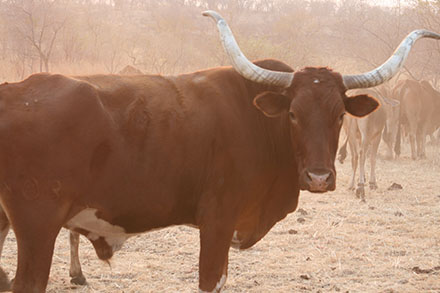
It’s 6:30 a.m. and pleasantly cool, though the sun is already heavy on the horizon. I’ve come to watch the cattle move from their lion-proof kraal, a movable enclosure made of thick canvas, to where they’ll graze for the day. The animals look healthy but thin. This reflects the season, says herding supervisor Dickson Ncube, noting that in September the nutritional level of the grass is down to 30 to 40 percent. Ranch manager Andy Walton says, “When the rains are within 30 days, they will start to improve condition.”
Ncube, 52, who’s from one of the local villages, has been at the ranch since 2002. He is immensely proud of this work, yet more so now that his son Duncan, 20, has joined the herding staff. “I have seen the land change,” Ncube tells me. “There were gullies and sinkholes. Then we started bringing in the cattle. The gully is still there, but now there is grass so there is no erosion.”
The gate now open, the herders are counting cattle as they leave the kraal. This unremarkable event, the slow, calm saunter of cattle, is the catalyst for the changes Ncube describes. It’s the paradox of Holistic Management: that ruminants acting upon the land can have a regenerative effect, when all logic suggests that cows grazing and trampling would cause it to deteriorate, as is often the case when animals graze at will.
Savory’s understanding of land-animal dynamics evolved here in Southern Africa, over several decades of observation, questioning and trial and error. The framework is based on two core insights: one, that grasslands and grazing animals are interdependent; and two, that while land can be overgrazed, it can also be undergrazed. As a game ranger in the 1950s and ’60s in Northern Rhodesia, now Zambia, Savory saw that when animals were removed or fenced away from land, conditions got worse. He recognized that ruminant behavior—nibbling, dunging, trampling, bunching up and moving to escape predators—stimulated biological processes that promoted soil fertility and plant growth and diversity. And that absent the vast, wild herds that had historically crisscrossed the world’s savannas, steppes and prairies, ordinary livestock properly managed could fill the niche.
Holistic Management addresses a basic challenge in seasonably dry environments: how to keep moisture in the soil from the end of one rainy season to the beginning of the next. Without animals eating grass and pressing dying plant matter into the ground, plant material accumulates without breaking down. This blocks fresh growth and inhibits biological decay. The result: the plant matter oxidizes and the soil loses carbon and water and the capacity to sustain plant and animal life. This is a common story throughout the world, since regions facing desertification, including many areas served by Heifer International, tend to have alternating rainy and dry seasons.
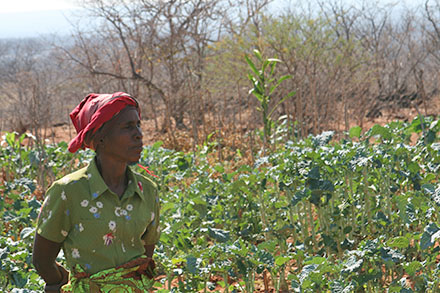
Finding solutions
It’s the paradox of Holistic Management: that ruminants acting upon the land can have a regenerative effect, when all logic suggests that cows grazing and trampling would cause it to deteriorate, as is often the case when animals graze at will. Holistic Management addresses a basic challenge in seasonably dry environments: how to keep moisture in the soil from the end of one rainy season to the beginning of the next.
With a shared interest in global poverty reduction and livestock, it would seem natural for the Africa Centre and Heifer International to find points of collaboration. Indeed, a potential project in the Sahel presents such an opportunity.
Rivers tell the story
To tour the ranch with Allan Savory is to watch a landscape spring to life. The tiniest detail takes on meaning. The sighting of a nest allows us to orient ourselves, as certain weaverbirds always build on a tree’s western side. By scanning impressions in the soil he determines that sable, baboons and elephants have been to the area, as well as a female giraffe, though that was a while back. “Most people would drive by and say, ‘Oh, nothing’s here,’” he says. Savory’s sensory acuity has been honed through the study and practice of tracking. This includes stalking wild animals—notably man-eating lions—as a game ranger, as well as leading a military tracking unit during Zimbabwe’s long and brutal war for independence.
We drive up to where two rivers, the Dimbangombe and the slightly larger Tsitsingombe, join up. This spot represents two catchments, water coming either from land managed by the national park service or land managed by the Africa Centre. Savory uses his walking stick to indicate how high the debris from flooding had reached in the respective watersheds, which he can tell from where driftwood has caught on trees limbs. “The flood water coming off the parkland reached three meters (nearly 10 feet) high,” he says. “This vehicle would have been under water.” By contrast, water flowing from the Centre’s land only rose three feet. On land where restorative grazing has been implemented, perennial grass and fertile soil absorbed the rain—which, when it arrives, can descend in torrents. On parkland, the water streamed off and eroded the soil. Once the rains stop, that land is left parched. To Savory, “this junction of rivers tells the whole story.”
A big part of the story is that the Dimbangombe River now has perennial pools along its length, and extends more than half a mile farther up its catchment area than has been known in living memory. Savory takes us to where the sole year-round pool had been, where elephants would congregate to bathe. The area looks desolate and the ground looks trampled. But it’s for a positive reason, Savory says. “They no longer depend on this place. Now elephants have lots of places to go for water.”
Limits and possibilities
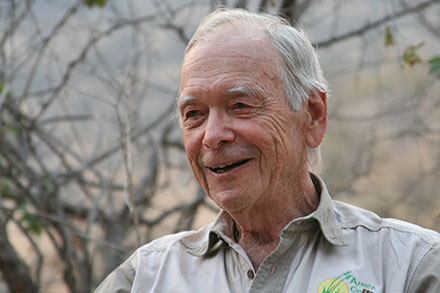
Some in academia and range science consider Savory controversial and are quick to dismiss his ideas. This vexes him no end. Not that others might challenge his work. To the contrary, he invites criticism and says, “If someone has suggestions to improve Holistic Management, or alternative ways to restore desertified land, I’d be happy to learn of it.” What frustrates him is when people confuse Holistic Management with various prescriptive grazing regimens. He stresses that Holistic Management is a planning approach rather than a model that dictates specific grazing patterns.
Those doubting restorative grazing’s validity might be interested to learn that as the land managed by the Africa Centre has rebounded, so has the wildlife. The property now has a higher density of lion than the nearby Hwange National Park. And the land supports healthy populations of sable and wild dog, species whose numbers are dwindling in many Southern African parks.
They could also, as I did, visit Sianyanga, some 125 miles to the south on the road to Bulawayo, a rural community of 150 families that has been working with the Africa Centre for seven years. On a walk through the village land a group of project participants shows me how conditions have improved. We stop at a vlei, or meadow. “This was so bare, you could pick up a needle from the ground,” one man says. “When the Africa Centre came, things started changing and grass and other plants started growing again.”
At several spots, Balbina Nyoni, 47, a data collector and single mother who brings a personal passion to improving land through animal impact, juxtaposes a photo taken several years back with how it looks today. Villagers used to walk nearly 20 miles to buy thatch to repair their huts. Now they harvest thatching grass on their land. A woman named Busie says that prior to 2007, many people traveled long distances to clear new crop fields, and were away from the village for several months. Now, she says, “we are able to feed our families, and neighboring communities come to us for food. We’ve learned there is no crop field that is beyond repair.”
With a shared interest in global poverty reduction and livestock, it would seem natural for the Africa Centre and Heifer International to find points of collaboration. Indeed, a potential project in the Sahel presents such an opportunity. Savory welcomes the chance to work with Heifer. “In the Sahel we’re dealing with extreme desertification,” he says. “Only 5 or even 2 percent of the land there is cropland, and the rest is degraded grassland. The key will be sharing knowledge of how to manage livestock on the range. If people manage holistically, I promise the land will improve. We haven’t had anyone manage holistically and not improve.”
Come six o’clock, the air cools and the sun sets with surprising rapidity. After a day’s work—which might include meeting with a Cabinet minister, arranging for a film shoot and fine-tuning an essay or talk—it’s time for a “sundowner”(Savory’s usual: a whiskey or can of Lion lager). He may laugh over how he had to thatch his roof three times due to the mischief of baboons. “There’s often no reason for what they do other than that it’s fun,” he says of baboons; a fan of practical jokes himself, he regards this as admirable. Or that bushbabies, small big-eyed primates he’s often kept as pets, love alcohol: “They’d lick around the top of the whisky bottle.” From across the ridge he may hear the whistled staccato of the pearl-spotted owl, or the yip and cry of jackals.
And there’s no place in the world he’d rather be.
Words by Judith Schwartz, World Ark contributor
Photos by Tony Eprile, Main Image via Unsplash
Story originally appeared in the Holiday 2014 Issue of World Ark magazine under the title 'Dirt of Ages'
Article taken from Heifer International; click here to read more and or support their causes.

